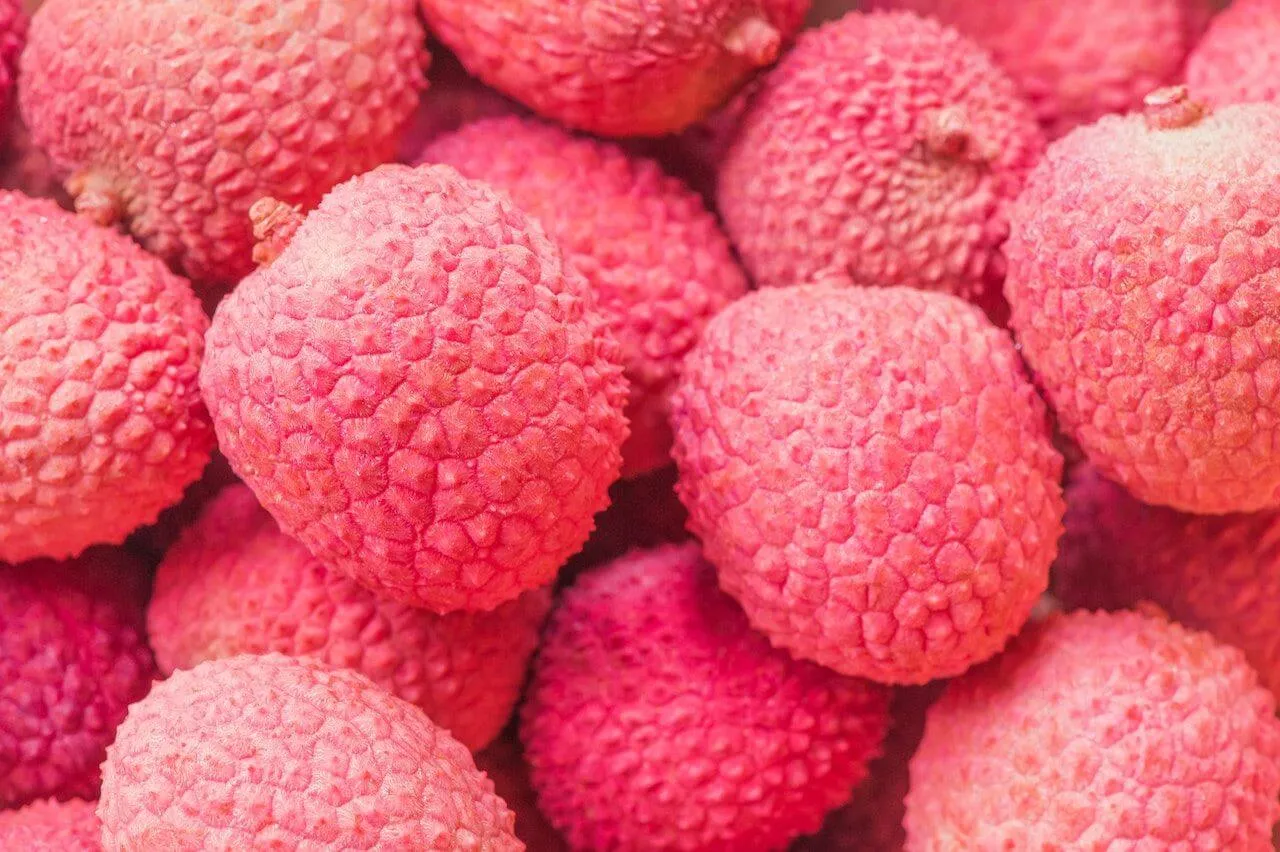Gelatin: according to the once-famous commercial, there’s always room for it, but does it deserve a spot in your diet? It might seem surprising that something that resembles few other foods could have health benefits. Is gelatin good for you?
Science suggests the answer is yes. Although the finished product might look like something that came off an assembly line, gelatin is a natural ingredient that contains several critical nutrients. Where does this stuff come from, and how can you use it? Here’s how gelatin is good for you, its benefits, and how to get more of it in your diet.
What Is Gelatin?
When you look at a cube of prepared gelatin, you might think of candy, marshmallows, or fruit roll-ups. While preparations containing the powder are often sweet, the magic ingredient doesn’t come from sugar cane. Gelatin comes from animal parts, like processed bones, cartilage, and connective tissue.1 It’s a splendid way of reducing waste while letting humans enjoy all the nutritional benefits of nature.
Processing extracts the collagen in these tissues, turning it into a powder, often called hydrolyzed collagen (HC). When mixed with a liquid, it takes on a jelly-like consistency. You probably recognize the primary ingredient from popular beauty products, and healthier skin and hair are only two of the perks this stuff offers.
5 Gelatin Benefits
Gelatin is healthy in moderation as part of a well-rounded diet. Check out these impressive gelatin benefits.
1. Helps Manage Blood Sugar Levels
The average American child consumes 19 teaspoons of sugar daily on top of what naturally occurs in food.2 This overconsumption encourages childhood obesity, which nearly 20% of youth have. More are overweight.
The pounds don’t get easier to shed as you get older, and many obese children suffer health problems as adults, including diabetes. While you can prevent the type 2 form of the disease through diet, more and more kids today receive diagnoses. Offering sugar-free gelatin as a snack may reduce this risk.
The sugar-free quality of gelatin isn’t the only way it benefits your blood sugar. An exploratory investigation into the effects of gelatin on blood sugar revealed its unique protein composition and the presence of the amino acid glycine might improve blood glucose tolerance by preventing your stomach from absorbing too much sugar at once.3
2. Helps Strengthen Joints and Bones
You might have learned bone broth provides an excellent collagen source, which may boost your body’s natural production of this substance as it has the raw materials it needs. Could gelatin be even better? The substance is powdered collagen peptides, a supplement you can make into food, and full of essential amino acids. Therefore, you now have an alternative if you aren’t a soup fan.
To be clear, your body doesn’t take the collagen from the gelatin you consume and buffers your knees with strawberry jello. However, it uses raw materials to make its supply. Joints are complex structures with many moving parts, and strengthening the connective tissues with reinforcement can ease pain and increase mobility.
Collagen is also the largest component of bone mass.4 Some researchers believe supplementing with it may prevent some of the bone loss that often accompanies menopause. Studies have shown that collagen supplements like gelatin can support bone health by reducing joint pain and increasing the density of cartilage.15 Gelatin contains lysine, which also strengthens bone and improves the ability of the human body to absorb calcium, which can prevent bone loss.
3. Hydrates and Keeps Healthy Skin
Collagen appears on many beauty product labels because it provides the underlying structure that keeps your skin supple and healthy. Could eating more gelatin reduce your need for Botox and fillers? It can combat some of the negative impacts your skin takes each day from pollution and stress. Gelatin also aids in wound healing. A 2021 expert review found it’s similar enough to human tissue to assist in this purpose better than artificial solutions.5
Collagen is also the primary component of your hair and nails. Some experts recommend using gelatin supplements to combat hair loss. While balding is a complex process that involves the growth cycle, eating more gelatin could strengthen existing strands, making them less breakage-prone. Likewise, you could combat weak, brittle nails by consuming more of the stuff and rectifying any additional nutrient deficiencies.
4. Improves Gut and Digestion
You might be surprised to learn gelatin is good for gut health. Researchers believe the peptides this collagen protein contains (glutamic acid and glutamine) protect against the inflammation characteristic of a leaky gut.6
Furthermore, combining gelatin with probiotics can prevent infection.7 Frequent infections can deplete intestinal health, especially if antibiotic overuse harms your microbiome and the healthy bacterial colonies that help you digest food. Prevention is best, as getting sick can make you more susceptible to future harm.
5. Low in Calories
Gelatin is a protein, meaning it provides four calories per gram, like carbohydrates. Fats provide nine calories per gram, but eliminating this weight keeps gelatin low in calories.
Adding sugar to gelatin increases its calorie content, hence why some commercial brands seem less diet-friendly. However, you can use a healthy sugar alternative when making a homemade version that keeps this food easy on your waistline.
Gelatin Nutrition Facts

Here’s what you’ll find in each tablespoon of gelatin8:
- Calories: 23
- Fat: 0 grams
- Cholesterol: 0 milligrams
- Carbohydrates: 0 milligrams
- Protein: 6 grams
You’ll also find trace amounts of vitamin D, calcium (vitamin C), iron, and potassium. There’s no sodium or caffeine, making collagen safe for people with cardiovascular conditions.
How to Make Gelatin
Making gelatin at home is a piece of cake. Skip the store-bought, high-sugar blends and opt for this easy recipe that uses only four all-natural ingredients.
1. Gelatin Ingredients
Gather the following ingredients for your all-natural, sugar-free gelatin:
- 2 pounds strawberries
- 4 tablespoons unflavored gelatin powder
- 1 ½ cups monk fruit/allulose sugar-free blend
- 1+ cups water
2. Instructions
Bring your strawberries to a boil in ½ cup of water. Reduce heat and simmer for eight to 10 minutes until the berries mash easily with a spoon.
In the meantime, mix the gelatin powder with another ½ cup of cold water. Whisk immediately, then set aside to bloom for five minutes.
Use a cheesecloth to squeeze the juice from the berries, adding water until you have a full three cups of liquid. Wipe the saucepan free of lumps, then add the fruit liquid and the monk fruit, cooking over medium heat and stirring until dissolved. Reduce the heat to low and add the gelatin mix, blending for another two minutes.
Finally, line an 8x8 baking pan with parchment paper. Pour the mixture inside and leave it to set in the refrigerator for four to six hours or overnight before cutting it into squares.
3. How to Store Gelatin
You need to know two things about storing gelatin. The first is in regard to your powder. Keep it tightly sealed and in a cool, dry place. If moisture enters, it transforms the powder into a rubbery mess.
You also need to know how to store your cooked gelatin. That part is easy; pop it in the fridge. While store-bought gelatin can last up to a month thanks to the preservative load, you should consume the homemade stuff within one week.
While you can’t freeze gelatin and thaw it to its original consistency, you can make popsicles by placing the mix directly into the freezer. Wait until it’s almost finished setting to insert sticks.
Surprise: you can also freeze the preset stuff for an unusual treat.9 Doing so changes the molecular structure, leaving you with something that’s lightly crunchy on the outside and chewy inside. Play with this variation and see if you love it!
What Is Gelatin Used For?
You probably best know gelatin as a low-calorie snack, and it’s ideal for this purpose. Take it to work to get a sweet fix without the associated sugar rush and crash. Since it is flavorless, you can easily add it to a smoothie, soup, drink, or other meals.
Healthcare providers also use gelatin in wound healing. This dressing offers structural support for new tissue while maintaining moisture levels.
Gelatin plays a crucial role in producing many of your favorite medications. It’s frequently used in gummies, capsules, and ointments, like those gel caps that make swallowing pills easier.
Chefs can use gelatin creatively in dessert towers and delicate finger-food treats. For example, they might use it to make a fruit cake that forms a beautiful shape in the mold. Likewise, they could use a dash to thicken their sauce to the perfect consistency or create homemade gelatin desserts like hard candies.
Side Effects of Gelatin
Gelatin has no side effects when consumed in moderation. However, eating gelatin in large quantities could lead to oral issues like mouth sores. Some people also experience an upset stomach after too much gelatin, although it's uncommon.
However, eating commercial gelatin preparations may increase the risk. For example, scientists have linked some of the sweeteners in store-bought sugar-free gelatin to increased cardiovascular disease and cancer risks10.
Summing Up

Although you might not think of gelatin as a healthy food, it has an impressive list of benefits. From helping with leaky gut to bettering your blood sugar control, this food can do a lot with relatively few calories. Most people tolerate it without problems, and it deserves a spot in any dieter’s meal plan, especially if they keep it natural and sugar-free.
Frequently Asked Questions
Here are some of the most frequently asked questions nutritionists receive about gelatin.
1. How Much Gelatin to Consume Per Day?
Health experts recommend limiting consumption to 10 grams or less per day.11
2. How Much Protein Is in Gelatin?
Gelatin is, in essence, pure protein. It’s basically collagen powder. It can help you reach your weight loss goals with only four calories per gram. The above gelatin recipe contains 6 grams of protein per serving.
3. Is There Such a Thing as Vegan Gelatin?
Since gelatin comes from animal products, it is not vegetarian or vegan. These products are often labeled as grass-fed beef gelatin or chicken gelatin. However, several plant-based alternatives produce a jelly with a similar consistency, including:12
- Agar
- Pectin
- Cornstarch
- Xanthan gum
- Guar gum
4. Does Gelatin Help the Joints of People With Arthritis?
A recent review of several studies suggests collagen in any form, including gelatin, may produce joint-protective effects in people with osteoarthritis.13
5. Can Gelatin Prevent Hair Loss?
There are relatively few studies on how well gelatin prevents hair loss. However, one early study from 1989 found a long-term therapeutic combination of gelatin, l-cysteine, and vitamin A had a beneficial effect on hair loss while producing no side effects.14
Learn More About the Signos CGM Program
Signos incorporates cutting-edge research and the proven power of continuous glucose monitoring. The data gleaned from the Signos app can help guide your health journey. Not sure if Signos is right for you? Take this quiz to find out! Interested in learning more about nutrition and healthy eating habits? Check out more articles on our blog.
Topics discussed in this article:
References
1. “What Is Gelatin Made of, and Is It Good for You?” Retrieved from: https://www.medicalnewstoday.com/articles/319124.
2. “Seven Ways to Reduce Sugar and Sodium Intake for Kids.” Retrieved from: https://www.nurturelife.com/blog/reduce-sodium-sugar-intake-kids/.
3. Ardach, Farah, et al. “An Exploratory Study of the Role of Dietary Proteins in the Regulation of Intestinal Glucose Absorption.” Retrieved from: https://www.frontiersin.org/articles/10.3389/fnut.2021.769773/full.
4. “Is Collagen Helpful for Osteoporosis?” Retrieved from: https://www.medicalnewstoday.com/articles/collagen-for-osteoporosis.
5. Bahari, Hasnah, et al. “Natural-Based Biomaterial for Skin Wound Healing (Gelatin Versus Collagen) Expert Review. Retrieved from: https://www.mdpi.com/2073-4360/13/14/2319.
6. Cao, Songmin, et. al. “The Anti-Inflammatory Effects of Bovine Bone-Gelatin-Derived Peptides in LPS-Induced RAW264.7 Macrophages Cells and Dextran Sulfate Sodium-Induced C57BL/6 Mice.” Retrieved from: https://www.mdpi.com/2072-6643/14/7/1479.
7. Carvajal, Romina I., et. al. “Consumption of a Gelatin Supplemented With the Probiotic Strain Limosilactobaccilius fermentum UCO-979C Prevents Heliobacter Pylori Infection in a Young Adult Population Achieved.” Retrieved from: https://www.ncbi.nlm.nih.gov/pmc/articles/PMC9222482/.
8. “I Tbsp Gelatin.” Retrieved form: https://www.nutritionix.com/food/gelatin/1-tbsp.
9. Campbell, Annie. “Something Magical Happens When You Freeze Jello: Here’s What It Tastes Like.” Retrieved from: https://www.allrecipes.com/how-to-freeze-jell-o-three-ways-7561428.
10. Alles, Benjamin, et al. “Artificial Sweeteners and the Risk of Cardiovascular Diseases: Results From the Prospective NutriNet-Sante Cohort. Retrieved from: https://www.bmj.com/content/378/bmj-2022-071204.
11. “Health Benefits of Gelatin.” Retrieved from: https://www.webmd.com/diet/health-benefits-gelatin.
12. Nunez, Kirsten. “8 Gelatin Substitutes Every Vegetarian and Vegan Needs to Try.” Retrieved from: https://cleangreensimple.com/article/vegan-gelatin-substitutes/.
13. Galvez-Martin, Patricia, et al. “Collagen Supplementation for Joint Health: The Link Between Composition and Scientific Knowledge. Retrieved from: https://www.ncbi.nlm.nih.gov/pmc/articles/PMC10058045/.
14. “Gelatin Stimulates Hair Regrowth.” Retrieved from: https://www.clinicaladvisor.com/home/features/advisor-forum/gelatin-stimulates-hair-regrowth/.
15. Martínez-Puig, D., Costa-Larrión, E., Rubio-Rodríguez, N., & Gálvez-Martín, P. (2023). Collagen Supplementation for Joint Health: The Link between Composition and Scientific Knowledge. Nutrients, 15(6), 1332. https://doi.org/10.3390/nu15061332




.svg)










.svg)
.svg)
.svg)
.svg)
.svg)
.svg)
.svg)
